Bacteriobot Holds ‘A Lot Of Promise’ To Treat Cancer, Says Doctor (Medical Nanorobots)
Summary: The recently perfected bacteriobot holds ‘a lot of promise’ in treating cancer says a physician. Cancer patients at a hospital in Montreal may be the first to be treated with nanorobots built out of bacteria. The new self-propelled, cancer-seeking bacteriobot swims right into the tumor and zaps it with a deadly payload of cancer drugs. [Cover image: Getty Images/iStock.]
Google’s futurist Ray Kurzweil once said that within decades, we will have nanobots, swimming through our veins keeping us healthy. Kurzweil was referring to a medical nanorobot, often called a nanodoc, for short. The tiny robots will keep us healthy by correcting DNA errors, removing toxins, extending our memories and zapping cancer. The futurist said that back in 2007, and his prophecy is becoming a reality, at least in the treatment of cancer.
Years spent developing bacteria-based nanobots are finally bearing fruit, and thanks to progress made by a physician at the Jewish General Hospital (JGH) in Montreal, cancer patients may be the first to be treated with tumor-killing nanorobots. The JGH doctors are using a newly-developed self-propelled, cancer-seeking nanorobot built out of bacteria and referred to as a bacteriobot, an amalgam of the words bacteria and nanorobot.
Bacteriobot Holds ‘A Lot of Promise’
Dr. Té Vuong, director of the Segal Cancer Centre’s Radiation Oncology at JGH, is leading the drive to bring bacteriobots to the clinic. Dr. Vuong presented her findings at a cancer conference in Montreal in June of this year. As reported by CBC News, Vuong recited the unique features of the bacterial-based nanorobots.
“The advantage of being very small is that they can penetrate the tumor very easily, without any barrier.” The researcher added, “We’re very excited because there is a lot of promise for our patients and this will allow us to move to a new generation of treatment for cancer.”
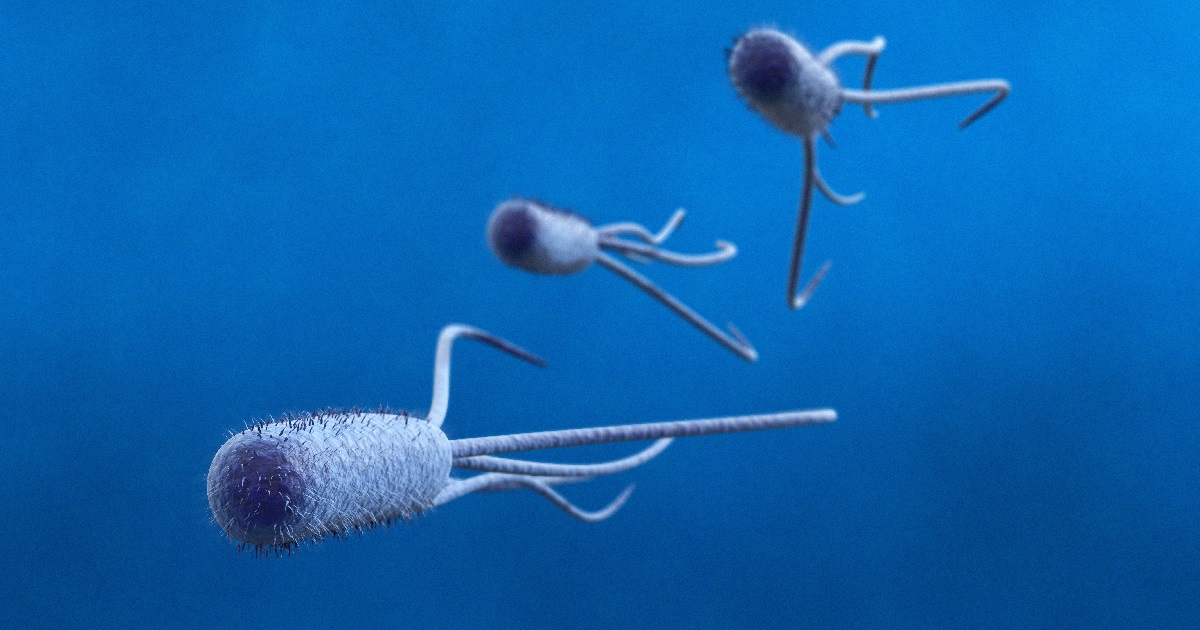
Rise of the Bacteriobots
Scientists have been developing bacteriobots for several years, with one research team improving on the bacteriobot model created by the previous one.
The fascinating story leading to the development of the modern bacteriobot has its twists and turns, with researchers ‘borrowing’ ideas from one another in the race to revolutionize cancer treatment.
The term bacteriobot is credited to researchers from Chonnam National University in Gwangju, South Korea who invented a prototype nanorobot based on bacteria and gave it the name bacteriobot. In 2014, Reuters interviewed Park Jong-Oh, director of the robot research initiative at Chonnam National University, who named their new invention during the interview with Reuters, saying “Our medical nanorobot, named ‘Bacteriobot,’ has very high efficiency as an anti-cancer treatment by selectively attacking cancer cells.”
JGH Leads In Bacteriobot Race
Led by Dr. Vuong, the Jewish General Hospital research team is ahead of the rest of the world in the race to bring bacteriobot treatments to the clinic. In developing the experimental treatment, JGH researchers created a bacteria that behaves like a microscopic robotic doctor and carries chemotherapy drugs to cancerous tumors in the body.
Although chemotherapy is effective in treating cancer, it comes with some nasty side effects because the treatment damages healthy cells. Researchers at JGH have come up with a solution: use bacteria-based nanorobots to treat cancer. Once injected into the bloodstream, these bacteriobots seek out and destroy cancer cells while leaving healthy cells alone. This novel form of treatment spares patients from the trauma and side effects of aggressive cancer treatments such as radiation therapy.
The bacterial nanorobots used by Dr. Vuong are self-propelled and also self-guided in a way, being attracted to low-oxygen areas, so they wiggle into the heart of the tumor by themselves.
The fact that a bacteriobot can guide itself to a cancerous tumor and then treat it brings the invention one step closer to the definition of a true nanodoc, defined as a nanorobot capable of autonomously detecting and treating diseased cells.
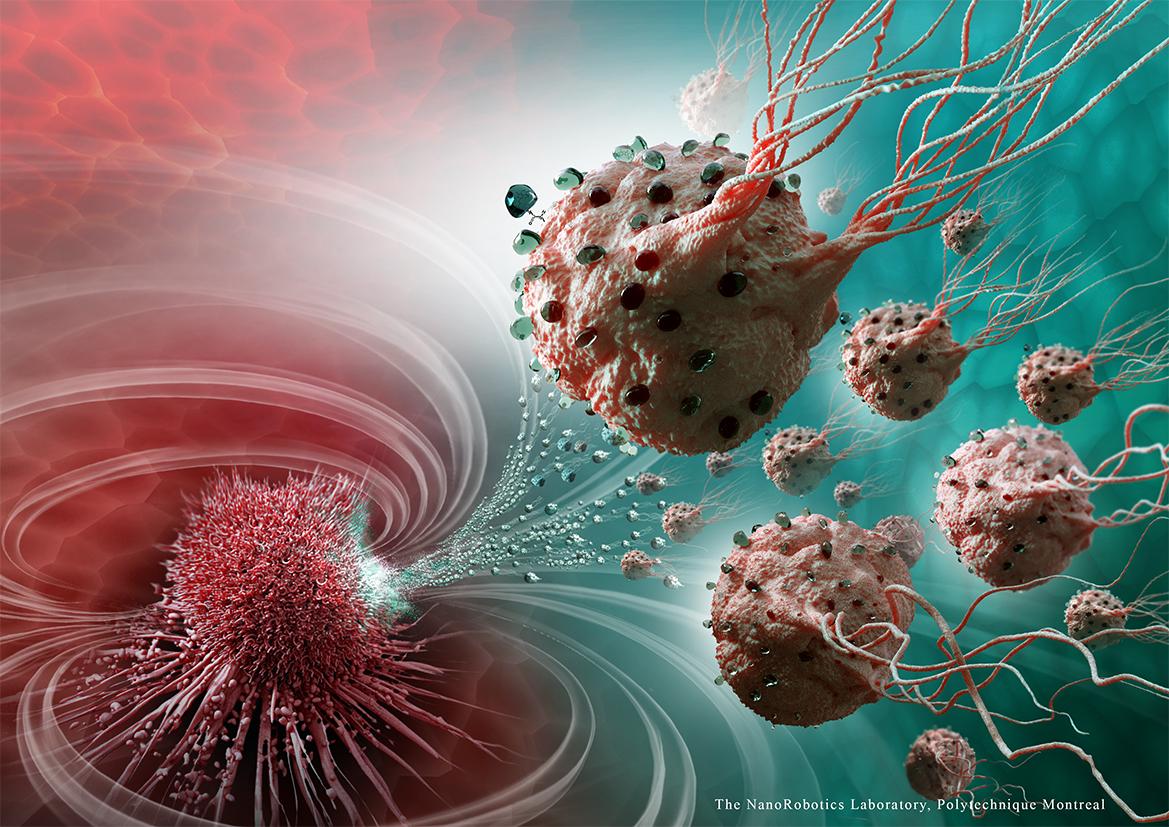
Self-propelled Cancer-seeking Bacteriobot
Vuong built his work on a foundation laid by other scientists, especially researchers from McGill University, Polytechnique Montréal, and Université de Montréal who reported a breakthrough with a self-propelled, cancer-seeking bacteriobot.
In August 2016, the researchers announced that they developed new nanorobotic agents capable of navigating through the bloodstream to deliver a drug with precision to cancer cells. The bacterial nanorobots are superior to conventional cancer treatments in that they deliver cancer drugs with precision at the tumor site while avoiding the surrounding healthy tissue. As a result, bacteriobots deliver the cancer-killing drug while reducing side effects.
The Canadian researchers built on the earlier work of the Koreans by adding more effective sensing and guidance systems to their bacteriobot. They engineered their creation to be attracted to low-oxygen tissues because rapidly-growing cancers tend to suck all the available oxygen out of tissues. Lastly, they used magnetic bacteria as a feedstock for their bacteriobots. By applying external magnetic fields, the Canadian researchers drove the bacteriobots to the tumors with magnetic force.
The researchers published their findings in the journal Nature Nanotechnology, documenting the successful results of testing the bacteriobots on mice with colorectal tumors.
Self-Guided Bacteriobots
When they enter a tumor, the bacteriobots autonomously detect oxygen-depleted tumors and deliver the payload of cancer drugs to the right spot. Highly proliferative tumor cells create oxygen-depleted zones due to their rapid growth and oxygen consumption. These types of cancers are resistant to most conventional therapies, including radiotherapy.
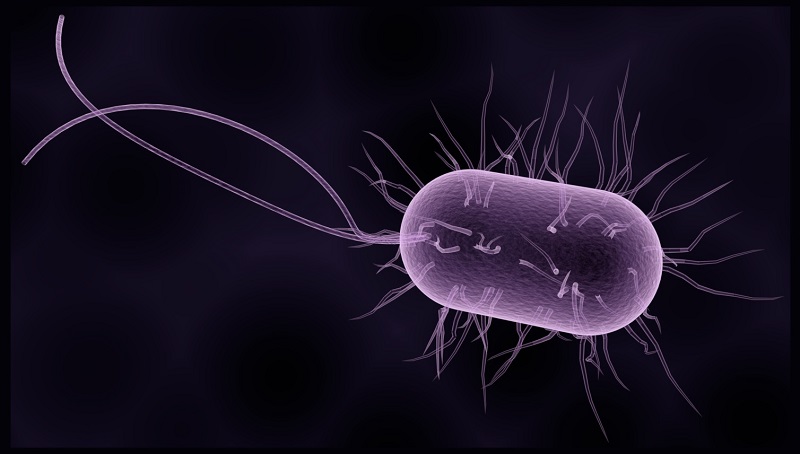
Auto-Sensing and Self-Propelled Bacteriobots
The Canadian bacteriobots are self-propelled, carrying a payload of cancer drugs and using their ‘tails’ to swim to the target. The researchers also engineered the bacteriobots with auto-sensing capabilities to detect the cancerous clusters of cells that form a tumor.
Heading the research team developing bacteriobots, is Professor Sylvain Martel, Director of the Polytechnique Montréal Nanorobotics Laboratory and holder of the Canada Research Chair in Medical Nanorobotics. As Dr. Martel explains,
“These legions of nanorobotic agents were actually composed of more than 100 million flagellated bacteria – and therefore self-propelled – and loaded with drugs that moved by taking the most direct path between the drug’s injection point and the area of the body to cure.”
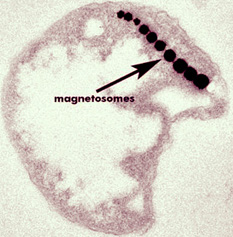
Bacteriobot With a Guidance System
The bacteriobots are drawn to tumors as if they were magnets because they are actual magnets.
To move around, the bacteriobot developed by Professor Martel’s team relies on natural systems to navigate. The team uses a strain of Magnetococcus Marinus bacteria that have magnetosomes. These compass-like magnetosomes cause the bacteriobot to orient itself along magnetic fields. This compass-like mechanism also allows researchers to steer the bacteriobot to the tumor, using external magnetic fields.
Bacteriobot Has Low-Oxygen Sensor
Magnets can get the bacteriobots near the tumor, but how to get them to go that last nanometer right to the cancerous tumor?
The Canadian researchers also engineered their bacteriobots to be self-guided. The scientists engineered their bacteria nanorobots with a sensor that measures oxygen concentrations and guides them to the tumor’s active region and keeps them there while they deliver a payload of cancer drugs.
By harnessing these sensing and guidance systems and then exposing the bacteria nanodocs to a computer-controlled magnetic field, the McGill researchers developed a prototype which showed that bacteriobots could replicate into the nanorobotic devices of the future. Professor Martel pointed out that team’s proof of principle experiment paved the way for future generations of nanodocs.
“This innovative use of nanotransporters will have an impact not only on creating more advanced engineering concepts and original intervention methods, but it also throws the door wide open to the synthesis of new vehicles for therapeutic, imaging and diagnostic agents.”
The Mcgill researcher added that bacteriobots could deliver chemotherapy drugs to a precise location, eliminating the side effects that patients experience when they ingest conventional cancer drugs and that physicians
“could make use of these natural nanorobots to move drugs directly to the targeted area, eliminating the harmful side effects while also boosting its therapeutic effectiveness.”
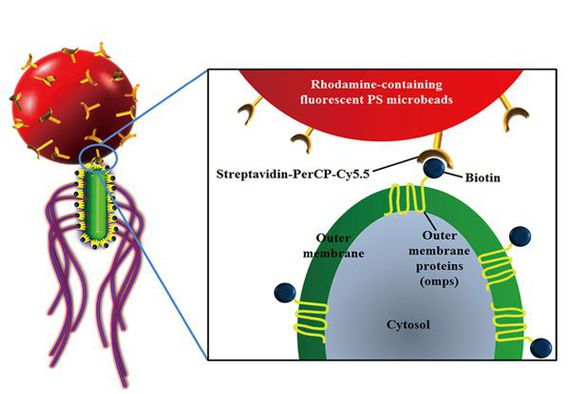
Korean Bacteriobots
In 2014, the researchers who coined the term bacteriobot announced the first prototype of the bacteria-based nanorobots. In that year, researchers from Korea’s Chonnam National University (CNU) announced that they developed a bacteria-based nanorobot that detects and treats cancer from inside the body. These bacteriobots are only effective at treating solid tumors. The CNU bacteriobot has only been tested in mice and only in colorectal and breast cancers.
How The CNU Bacteriobot Works
Despite its limitations, CNU’s first bacteriobot prototype laid the groundwork for later scientists and was a genetically-modified non-toxic salmonella bacteria that delivered targeted cancer treatments to tumors.
The Korean research team engineered the bacteria to be attracted to chemicals released by cancer cells. The bacteriobot carries a payload of cancer drugs. After being injected, the bacteriobot goes directly to tumors and releases the medication stored inside.
The scientists at CNU constructed their bacteriobots out of genetically modified bacteria attached to a three-micrometer polystyrene microbead body. Once injected into the bloodstream the bacteriobots seek out cancer cells and sprays them with anticancer drugs. The engineered bacteria that make up the bacteriobot are attracted to substances such as vascular endothelial growth factor, a molecule produced in high quantities by cancer cells.
Bacteriobot Testing
The CNU researchers tested the bacteriobots on mice with tumors. To test the effect of the bacteria, the scientists created three groups of cancer-ridden mice consisting of two test groups and a control group. The researchers injected beads attached to bacteria into one test group and injected inert micro beads without bacteria into the other. The scientists coated the bacterial nanodocs with a dye capable of fluorescence and bioluminescent, to make them visible.
When the researchers extracted the tumors from the control group, they showed no sign of fluorescence or bioluminescence. The test group injected with bacteria showed bioluminescence, but no fluorescence. Only the group with bacteria and micro beads showed both, indicating that the bacteria with microbeads, or bacteriobots, were the most effective at targeting cancer cells.
Bottom Line
Conventional cancer drugs kill cancer cells but also injure healthy cells throughout the entire body. Nanorobots constructed with bacteria, called bacteriobots overcome this limitation by delivering higher doses of cancer-killing medicine at the precise location of the tumor.
Bacteriobots have the advantage of being small and possess propulsion systems and guidance systems that guide them to the tumor and enable them to penetrate it.
The current crop of bacteriobots owes their success to three groups of researchers. The first group at CNU came up with the bacteriobot concept: a tumor-seeking, self-propelled bacteria with cancer drugs strapped to its back. While the CNU concept was perfect, the implementation wasn’t quite good enough.
The second group of researchers, headed by Dr. Martel improved on the Korean bacteriobot, by adding even more effective sensing and guidance systems, choosing magnetically-guided bacteria for their particular flavor of bacteria-based nanorobot. The Canadian researchers engineered their bacteriobots to have a hunger for low-oxygen tissues characteristic of fast-growing tumors and got their micro-critters to go the last nanometer inside the tumor.
The third group of researchers led by Dr. Vuong is leading the drive to bring bacteriobot treatments to the clinic. And, as Dr. Vuong said, it is this phase that holds the most promise for cancer patients and “will allow us to move to a new generation of treatment for cancer.”
Related #1: See a video of medical nanobots in action.
Related #2: Learn more about the new technology used to create nanodocs.
Related #3: ASU researchers unveil cancer-seeking nanorobots that starve tumors.
Help Us Spread the Word
Please share this post and help us spread the word. All it takes is one simple click on any of the social media links on this page.
References
CBC News, “’A lot of promise’ for nanorobots to treat breast cancer, says Montreal doctor.” June 2017. CBC News.
Polytechnique Montréal. “Legions of nanorobots target cancerous tumours with precision.” Press Release. August 15, 2016.
Sylvain Martel et al. “Magneto-aerotactic bacteria deliver drug-containing nanoliposomes to tumour hypoxic regions.” Nature Nanotechnology 11, 941–947 (2016) doi:10.1038/nnano.2016.137. Published online 15 August 2016.
Sung Jun Park et al. “New paradigm for tumor theranostic methodology using bacteria-based microrobot” Nature. Scientific Reports 3, Article number: 3394 (2013). doi:10.1038/srep03394. Published online: December 2, 2013.
Disclaimer
Diagnosis, Treatment, and Advice: This article is intended for educational and informational purposes only and is not a substitute for professional medical advice. Bacteriobots are experimental treatments and have not been proven to be safe and effective in clinical trials. Experimental treatments such as bacteriobots carry a much higher risk than FDA-approved ones. The information provided in this report should not be used during any medical emergency or for the diagnosis or treatment of any medical condition. Consult a licensed physician for the diagnosis and treatment of any and all medical conditions. Call 911, or a equivalent emergency hotline number, for all medical emergencies. As well, consult a licensed physician before changing your diet, supplement or exercise programs. Endorsements, Photos & External Links: This article is not intended to endorse organization, companies, or their products. Links to external websites, mention or depiction of company names or brands, are intended for illustration only and do not constitute endorsements.
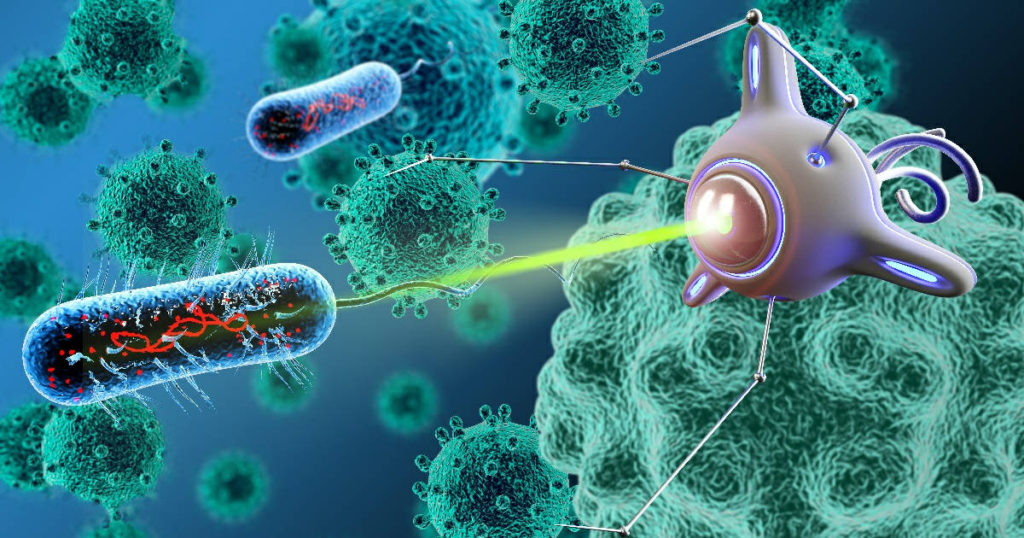
7 Replies to “Bacteriobot Holds ‘A Lot Of Promise’ To Treat Cancer, Says Doctor (Medical Nanorobots)”
Comments are closed.